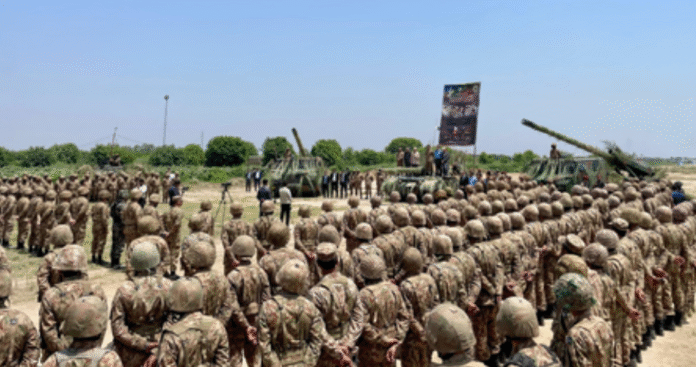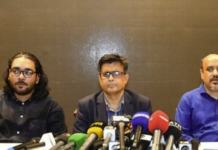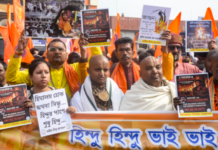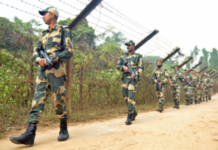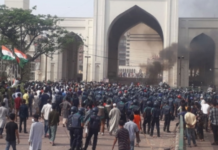ISLAMABAD– In a region long plagued by insurgency and instability, Pakistan’s military establishment has not merely participated in the chaos—it has played the role of principal architect in institutionalizing terrorism as a core component of national strategy. Far from being an unintended consequence of regional upheaval, Pakistan’s facilitation of terrorism represents a deliberate, long-term doctrine—one that continues to evolve as a tool of geopolitical influence.
From harboring international jihadist networks to allegedly leveraging ISIS to target both the Afghan Taliban and Baloch insurgents, Pakistan’s military-intelligence apparatus has transformed proxy warfare into a state-sponsored system of control.
Recent intelligence assessments from Afghan and Western officials paint a troubling picture: factions within Pakistan’s Inter-Services Intelligence (ISI) are reportedly backing elements of the Islamic State Khorasan Province (ISIS-K) in efforts to destabilize the Taliban-led government in Afghanistan.
Since the Taliban’s return to power in 2021, ties between Islamabad and Kabul have frayed, primarily over disputes along the Durand Line and the Taliban’s sheltering of Tehrik-i-Taliban Pakistan (TTP) militants. In response, Pakistan appears to be shifting its strategy—allegedly weaponizing ISIS-K to undermine Taliban authority and reassert influence in Afghanistan.
This isn’t speculative. Multiple ISIS-K attacks targeting Taliban leaders and Afghanistan’s Shia minority communities have reportedly originated from training camps and safe havens within Pakistan’s Khyber Pakhtunkhwa and Balochistan provinces. Afghan intelligence agencies have repeatedly accused the ISI of facilitating the group’s cross-border movement and logistics, effectively supporting anti-Taliban operations. The Taliban government itself has publicly accused foreign intelligence services—an implicit nod to Pakistan—of aiding ISIS operatives entering Afghan territory.
Meanwhile, the insurgency in Balochistan continues to intensify. The Baloch nationalist movement, fueled by decades of economic neglect and brutal repression, has seen an increasingly militarized response from the Pakistani state. Rather than addressing the root causes, the military has doubled down—allegedly deploying jihadist groups such as Lashkar-e-Jhangvi and ISIS-linked operatives to target secular Baloch leaders.
There are documented cases of Baloch activists being abducted or assassinated by groups claiming allegiance to ISIS, only for intelligence to later reveal links between those groups and ISI handlers, via intercepted communications and insider testimony.
This is not a rogue operation—it is a systematic, decades-old tactic. By outsourcing repression to jihadist proxies, the military maintains plausible deniability, deflects global criticism, and seeks to discredit nationalist movements by associating them with terrorism. This playbook was perfected during the 1980s, when Pakistan, with American and Saudi funding, built a vast network of Islamist fighters during the anti-Soviet jihad in Afghanistan. Many of those fighters went on to form the Taliban and al-Qaeda.
The infrastructure did not dissolve with the Cold War’s end. It was redirected. In Indian-administered Kashmir, the ISI cultivated groups like Lashkar-e-Taiba (LeT) and Jaish-e-Mohammed (JeM), responsible for major terror attacks including the 2001 Indian Parliament assault and the 2008 Mumbai attacks.
Despite global pressure, many of these groups continue to operate with near impunity. Hafiz Saeed, the LeT founder and a UN- and U.S.-designated terrorist, has held public rallies and run front organizations under the guise of charity for years.
The scale of the state-terrorism nexus is staggering. A 2023 Financial Action Task Force (FATF) report noted that Pakistan harbors more than 40 UN-designated terrorist groups, many of which still operate freely—raising funds, recruiting operatives, and coordinating attacks. Islamabad has made surface-level gestures—freezing bank accounts, announcing arrests—but the underlying strategic calculus remains unchanged.
Pakistan has mastered the art of geopolitical double-dealing: posing as a victim of terrorism while nurturing terrorist proxies to achieve regional aims. Domestically, Islamist groups are used to silence critics—journalists, academics, and minorities. Internationally, terrorism remains a tool of influence. Whether manipulating tensions in Kashmir, undermining the Taliban in Kabul, or suppressing the Baloch movement, the ISI’s hidden hand is ever-present.
This duplicity has confounded global counterterrorism efforts. The discovery of Osama bin Laden’s safe house just miles from Pakistan’s premier military academy in Abbottabad was a stark revelation—but little has changed since. Pakistan continues to distinguish between “bad terrorists” (those who attack Pakistan) and “good terrorists” (those who serve its interests).
What makes this strategy especially dangerous in 2025 is the shifting regional landscape. China, through its massive investments in the China-Pakistan Economic Corridor (CPEC), has become increasingly uneasy about the growing violence in Balochistan. But rather than cracking down on militancy, Pakistan’s military has reportedly intensified its reliance on extremist proxies to secure Chinese infrastructure—turning CPEC into a corridor laced with conflict.
The global community can no longer afford to overlook this duplicity. Continued Western aid, military support, or diplomatic accommodation only emboldens Pakistan’s deep state.
Pakistan is not merely a victim of terrorism—it is one of its chief architects. Unless the international community acknowledges this truth and responds with decisive action—through targeted sanctions, terror designations, and the withdrawal of support—South Asia will remain hostage to a state that thrives on ambiguity, projection, and proxy violence, with far-reaching consequences for global security. (Source: IANS)


